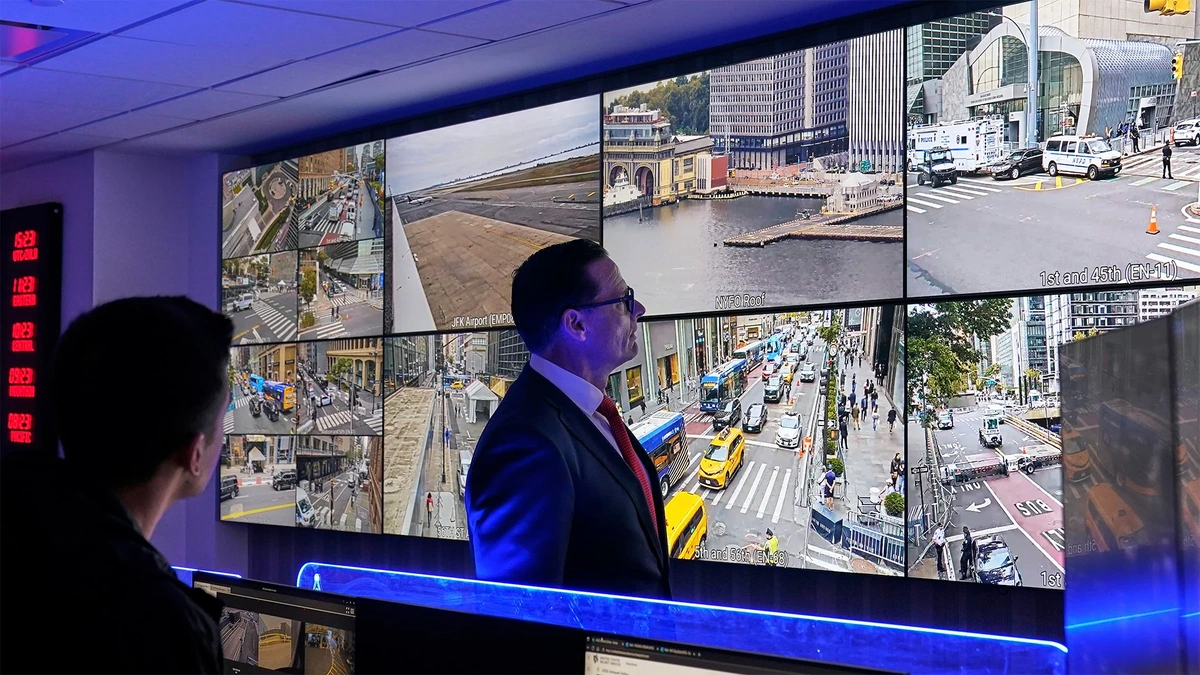Ever wonder how the Secret Service keeps the President safe, especially in this age of digital espionage? It’s not just about sharp suits and firearms. The real battleground is often the airwaves – securing their telecommunications. And honestly, it’s far more complex and fascinating than most people realize.
Why Secret Service Telecommunications are a Prime Target

Here’s the thing: protecting the President isn’t just about physical security. It’s about preventing any compromise of information. Think about it. If an adversary can intercept or disrupt the Secret Service’s communications, they could potentially:
- Gain insight into presidential movements and schedules.
- Disrupt coordination during emergencies.
- Plant disinformation to create chaos.
This makes the telecommunications threat incredibly high-stakes. It’s not just about eavesdropping; it’s about potentially crippling the entire protective apparatus. The Secret Service needs ultra-secure channels. Now that the world is more technologically inclined, it’s even more important to understand the national security implications . I’ve seen similar levels of security applied to less critical situations , but here, failure isn’t an option.
The Layers of Defense | How the Secret Service Fights Back
So, how do they do it? It’s not one single magic bullet, but a multi-layered approach. This involves:
- Encryption: Using advanced encryption algorithms to scramble communications, making them unintelligible to unauthorized parties. This is not your run-of-the-mill encryption – we’re talking top-tier, constantly updated protocols.
- Secure Channels: Establishing dedicated, secure communication channels that are constantly monitored for intrusions. Think of it like a private internet, only accessible to authorized personnel.
- Counter Surveillance: Actively monitoring the airwaves for any signs of eavesdropping or interference. It’s a constant game of cat and mouse.
- Signal jamming: Creating devices and methods to jam adversary signals to create a safe communications environment.
What fascinates me is the constant evolution of these technologies. The Secret Service has to stay one step ahead, anticipating the next generation of threats. I initially thought this was all technical, but I realized there’s a huge human element too – training, awareness, and constant vigilance.
The Human Element | Training and Vigilance
Technology is only as good as the people using it. The Secret Service places a huge emphasis on training its agents to recognize and respond to potential security breaches . This includes:
- Regular cybersecurity training to identify phishing attempts and other social engineering tactics.
- Drills and simulations to practice responding to communication disruptions.
- Awareness programs to educate agents about the latest threats and vulnerabilities.
Frankly, this is where many organizations fall short. They invest in technology but neglect the human element. The Secret Service gets it. They understand that a well-trained agent is the first line of defense. The electronic surveillance measures are important, but it’s the agent on the ground who has to act fast.
The Future of Secret Service Communication Security
Looking ahead, the challenges are only going to intensify. Quantum computing, for instance, poses a significant threat to existing encryption methods. And the proliferation of sophisticated hacking tools means that adversaries have more ways than ever to target the Secret Service’s communications.
The Secret Service needs to constantly adapt and innovate, exploring new technologies like:
- Quantum-resistant encryption.
- Artificial intelligence (AI) to detect and respond to threats in real-time.
- Decentralized communication networks that are more resilient to disruption.
But what really matters is not just adopting new tech, but critical infrastructure protection. How can the Secret Service stay agile and prepared for unforeseen threats? That’s the million-dollar question. It’s a lot like securing a college campus , only the stakes are infinitely higher.
The Ever-Present Danger of Cyber Espionage
In today’s digital age, the threat of cyber espionage looms large over every sector, and the Secret Service is no exception. The agency must constantly guard against sophisticated attacks aimed at intercepting sensitive communications, stealing valuable information, or disrupting critical operations. This requires a proactive approach to cybersecurity, including robust threat intelligence gathering, advanced intrusion detection systems, and continuous monitoring of network traffic.
The challenge is not only to defend against known threats but also to anticipate and prepare for emerging ones. As adversaries become more sophisticated, the Secret Service must stay ahead of the curve by investing in cutting-edge technologies and fostering a culture of cybersecurity awareness among its personnel. It’s a constant arms race, with the stakes getting higher every day.
FAQ | Unpacking Secret Service Telecommunications Security
What specific types of communication does the Secret Service need to protect?
Everything from radio transmissions between agents to secure phone calls and data transfers. Any communication that could reveal sensitive information about the President or their protection is a target.
How often does the Secret Service update its security protocols?
Constantly. They’re always assessing new threats and vulnerabilities and adjusting their security measures accordingly. It’s a never-ending process.
What happens if a breach in communications is detected?
Protocols are in place to quickly isolate the compromised channel, reroute communications, and investigate the source of the breach. Speed and decisiveness are key.
Are the communication security measures the same everywhere the President goes?
No. They adapt to the specific environment and threat level of each location. A visit to a remote area will require different security measures than a visit to a major city.
What role does the White House Communications Agency play in all of this?
They provide the technical infrastructure and support for the President’s communications, working closely with the Secret Service to ensure everything is secure.
The silent battle for control of the airwaves is a constant and evolving threat to the Secret Service. And while the public might only see the agents in suits, the true guardians are those working tirelessly to protect the President’s communications. It’s a high-stakes game, and the future of national security depends on their success.




